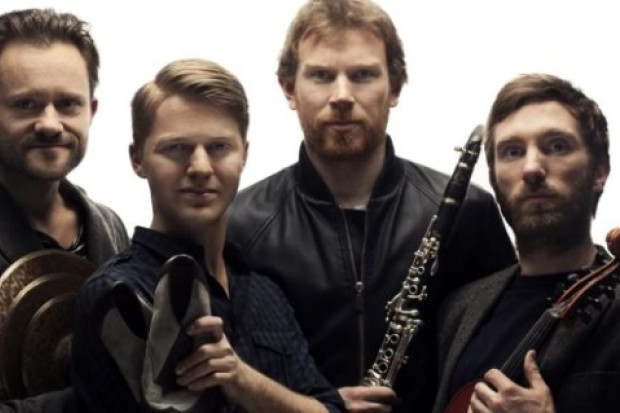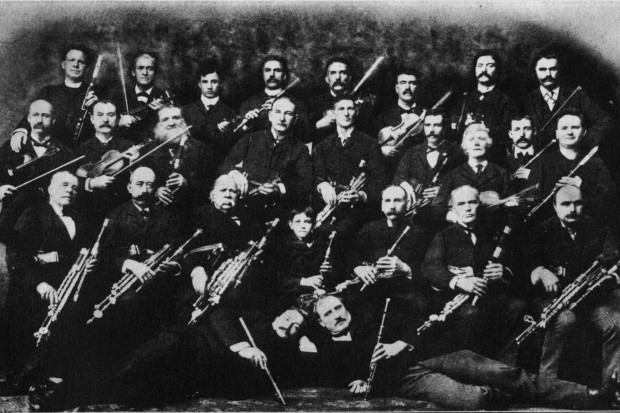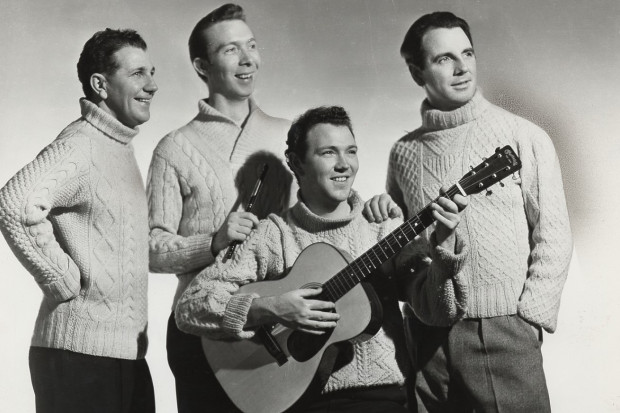When Musicians Became Bolder
Seoltaí Séidte (Setting Sail): Ceolta Éireann 1957-61 – Forty Three Historic Recordings, 2 CDs
Gael-Linn, CEFCD184s25
Something happened to people in America and Europe during the years after the Second World War. The chaos of the war (and of the peace) caused people to seek for different answers to the issues of work, religion, culture, everything. One effect of the passing of this zeitgeist was that people who previously had no regard for the form began to engage with folk music, mostly as consumers but with a significant number going on to immerse themselves in it and to become themselves, to a greater or lesser degree, folk musicians.
Some – one thinks immediately of Joan Baez and Bob Dylan – were taken up by the music industry and sold back to the people as ‘folk-singers’. Of course they were nothing of the kind. At the time both were merely performers of folk-songs – a very different thing indeed! Baez, wonderful performer as she is, never got any deeper; Dylan may have actually become the real thing – that argument is for another day.
Ireland, emerging from the boredom of ‘The Emergency’ rather than from the pain of warfare, was somewhat behind America and Britain in catching the mood of the times, but by ten years after the war here too the process was well under way. Those who had the music and song became confident and proud of it – perhaps it was simply that they finally realised that ‘authority’ in commercial or classical music was a god which they no longer had to respect. They realised that theirs was an equally valid mode, and the knowledge liberated them. The crucial thing is that what took place was not a ‘revival’ in the sense that word is usually understood. There was no thawing-out of frozen specimens or resuscitation of preserved corpses. The music was still in the hands of folk-musicians, who simply got bolder.
These were, of course, a minority. Modern life had made a commodity of music, just as it had of all the essentials of life that people once made for themselves, and the commodities the market has for sale are overwhelmingly those produced by the biggest players. So, while a minority continued to create and re-create their own music, a majority relied on the imported item, or domestic imitations. Elements of that majority caught the glimpse of alternative possibilities and began to seek out that music which was historically theirs, and which at this stage was coming to meet them. To call this process a ‘revival’ is as offensive to the (ab)original occupants as to say that Europeans ‘discovered’ America.
Gael Linn
Into this cultural ferment arrived Gael Linn, an organisation founded in 1953 to promote the speaking of Irish. To support their objects, in an early example of import-substitution, they set up a fund-raising operation similar to the English football pools but based on Gaelic games (‘Gael Linn’= ‘Irish pools’). Their promotional activities were extensive and included a regular radio programme. The necessity to provide Irish-language musical content for this led them into recording their own material, for there were simply no commercially available recordings of Irish folk music at the time. And so in 1957 they began to publish records. The format for published recordings that had been used for half a century – ten-inch disks playing at 78 rpm, with room for one item on each side – had already been superseded by lighter twelve-inch disks designed to play at 33 rpm, which could hold up to ten times as much material. However, their recordings were targeted primarily at Gaeltacht areas, and Gael Linn obviously believed that purchasers in these more traditional areas would be more likely to have traditional sound equipment. They stuck to this format for four years, issuing twenty recordings with a total of forty-three tracks. They were referred to as ‘records of the Gaeltacht’, and the phrase inevitably brings to mind the phenomenon of the ‘race records’ issued in the southern states of the USA in the 1920s and 30s – a reminder that ‘revivals’ everywhere follow similar trajectories.
The issues were heavily slanted towards song, with twenty-three of the items performed by seven singers. Next came fiddle (six performers with eleven items), pipes (two performers with five items) and flute and box, each represented by one performer with two items each. A third of the items were recorded by just two singers, Seosamh Ó hÉanaí and Seán ’ac Dhonncha, with seven songs each.
You would have to be an old geezer like me to remember the excitement produced by these recordings. Forty-three tracks in four years is nothing now – less than the amount released each month these days – but it was revolutionary at a time when nothing was being published in Ireland. These were recordings of folk musicians, not performers of folk-music, and they had a liberating effect on those who heard them. People who were already appreciative of the real thing had their tastes and values validated (if they needed validation); those unfamiliar with that sound suddenly had a door opened to a different set of musical possibilities and aesthetics, and one that, unbelievably, they could call their own.
It helped that some of the finest singers and musicians in the country had been selected to perform. The singing and playing is wonderful, and brings many reminders of the way things used to be. Willie Clancy and Tommy Reck, for instance, play pipes pitched in B flat and in B – several tones below modern ‘concert’ (or rather ‘session’) pitch. Listening to their different styles, and to the sound of these wonderful instruments (Moloney and Kenna, nineteenth and eighteenth centuries), one can understand how piping can exert a fascination unequalled by any other instrument. Denis Murphy’s three tracks provided many people with their first opportunity to hear the Sliabh Luachra style, which can be traced to the playing of Pádraig O’Keeffe and his contemporaries. The other five fiddle players, from Antrim, Armagh, Clare and Tipperary, provide their own different takes on fiddling. I thought the Armagh player Johnny Pickering’s playing particularly attractive. No Donegal fiddle players are included, which is probably a result of the orthodoxy of the time which held Donegal fiddle-playing to be a branch of Scottish music rather than of Irish. We can be thankful that this is one piece of nonsense that has been abandoned. Were a similar series to be issued today, it would be unthinkable to leave out the Donegal contribution.
Donegal song was not forgotten however, and there are five items here from Áine Ní Ghallchobhair and Aodh Ó Duibheannaigh, the latter singing the iconic ‘Úirchill an Chreagáin’. This is the song that had so inspired Séamus Ennis, whose own playing of it was later to inspire Pádraigín Ní Uallacháin. The version here comes to us by a different route, recounted by Ní Uallacháin in A Hidden Ulster, and it’s great to have this version again for comparison.
The Kerry song tradition is represented by one song each from Seán de hÓra and Diarmuid Ó Flatharta, but it is Conamara singing that is the centrepiece of these recordings with sixteen songs, seven each from Seosamh Ó hÉanaí and Seán ’ac Dhonncha and two from Máire Ní Dhonnchadha. Ó hÉanaí and ’ac Dhonncha are undoubtedly the stars and their singing is superb. In each case the style is interesting for the absence of features. Seán ’ac Dhonncha had a favourite device in his singing – a slide to a note – which many felt he made too much use of in later years. Here it is used lightly, and with more effect. His style is also remarkable for the absence of those rhythmic and vocal devices which are nowadays believed to be the sine qua non of Conamara sean nós. Ó hÉanaí, likewise, in his later years in America became conscious of his ‘folk-singer’ identity and it began to effect his style, with more emphasis being placed on those features he felt carried most weight with his listeners. On these recordings he sounds fresh and un-affected, and in magnificent form.
Although the singing and playing is uniformly superb, that almost doesn’t matter. What was just as significant was that the real sound of roots performances could be heard. For the first time it was possible for the majority of Irish people, long cut off from their own traditions, to hear their own folk heritage in authentic performances.
The curious thing is that through this re-issue these performances could play almost the same role today. The day after I was asked to review this publication I heard a trio of young musicians playing in the centre of Dublin. It was obvious from their playing that they had learned their tunes directly from the recordings of one of the numerous two-syllable groups that abound nowadays. They were reproducing all the gimmicks and syncopations of the CD tracks that were their sources, so that I felt as if I was listening to wannabee pop-stars rather than traditional musicians. Ireland is a country where it is still possible to be a folk musician; our tradition is so strongly rooted and so dispersed that one has to be very cut off to avoid learning music traditionally. Yet these youngsters had managed it; they weren’t playing tunes, they were re-producing ‘tracks’ – buying into the commodification of the music. It might be asked – what is the difference between learning from a modern CD or a 1950s 78. The intentions of the performers, that’s what! Professional musicians polishing and shaping their repertoire to exploit a targeted market is one thing (and something I have no problem with); performers who render their material to please themselves is another, and only one of these can be called folk music.
The worth of these performances is reflected in the extremely handsome packaging. The two CDs come in a DVD style box with an accompanying 96 page, bilingual booklet which contains a history of Gael Linn and of these recordings, accounts of the performers, notes on the material performed and texts and translations of all the songs, the whole enlivened by the lavish use of photographs. The notes – comprehensive and meticulously researched – are the work of Nicholas Carolan of the Irish Traditional Music Archive.
If I could, I would buy a copy of this publication and present it to every kid who decides to learn a song or take up an instrument. I think it is that good, and that important.
Published on 1 November 2004
Terry Moylan is a researcher and archivist with Na Píobairí Uilleann. He is the author of The Age of Revolution in the Irish Song Tradition 1776-1815.














